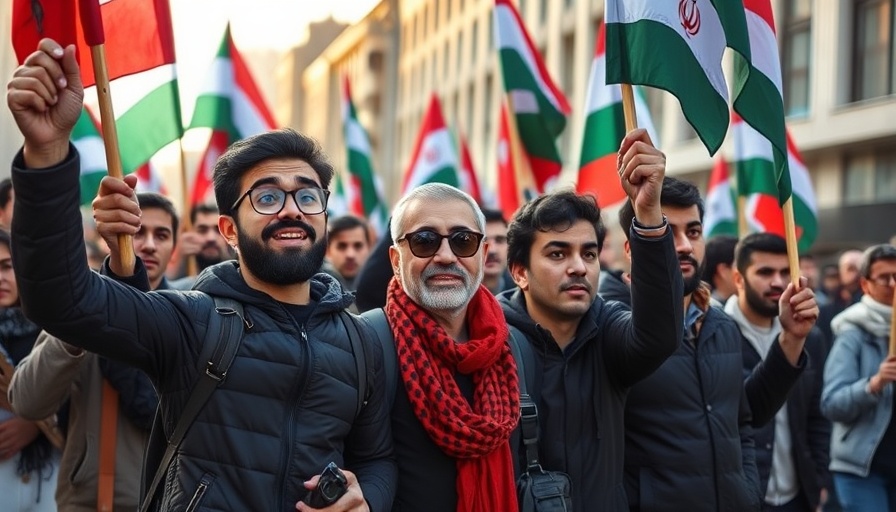
Understanding the Protests: A Complex Landscape
In response to the recent U.S. strikes on Iranian nuclear sites, protests erupted throughout Tehran, revealing the duality of public sentiment in Iran. On one hand, many citizens gathered to express their discontent toward the United States, fueled by nationalistic fervor. On the other, there lies a deeper, more troubling current of dissatisfaction with their own government. This presents a critical juncture for Iran, a nation grappling with economic hardship exacerbated by sanctions and military interventions.
In Protests in Tehran after US strikes on Iranian nuclear sites | BBC News, the discussion dives into the escalating conflict between the US and Iran, exploring key insights that sparked deeper analysis on our end.
Public Sentiment: A Divided Iran
The mood in Iran is complicated. While the government strongly asserts its stance against U.S. aggression—brandishing rhetoric of resilience—the voices of disillusionment amongst the populace grow louder. The protests not only reflect anger at American actions but also underscore the frustration with a regime that many believe has failed to safeguard their interests. As articulated by residents, the hope rests on finding a way to de-escalate tensions, indicating a desire for a reprieve from constant fear of bombings and military responses.
The Human Cost of Conflict: Civilian Lives at Stake
The reports from Iran highlight a stark reality: civilians bear the brunt of these geopolitical conflicts. The emotional toll of hearing drones overhead and worrying about bombardments is felt daily by millions. As the Iranian regime faces its own internal pressures, citizens are haunted by unresolved anxiety about their safety and the future. Understanding this backdrop allows us to empathize with their plight, revealing that beyond political dialogues, real human lives are at stake.
The Iranian Regime’s Response: Balancing Act or Fool’s Game?
The Iranian regime finds itself at a crossroads. Responding aggressively could invite more severe U.S. retaliation—historically proven to exacerbate rather than alleviate tensions—yet failing to act might further erode their credibility domestically. The stakes are incredibly high: leaders are under immense pressure to project strength while managing widespread public dissent. As Bahman Kalabasi articulated, finding a peaceful resolution to end the cycle of violence is what many, particularly the youth, urgently desire.
Looking Ahead: Possible Outcomes for Iran
As the situation unfolds, the potential for a negotiated settlement—once a remote possibility—seems increasingly necessary, albeit daunting. The path to diplomacy may involve uncomfortable concessions for the Iranian leadership, forcing a reckoning with long-held beliefs about their military posture and geopolitical strategies. How Iran navigates this predicament can either steer its future toward engagement and rebirth or deeper isolation and despair.
Your Role as a Global Citizen: Understanding the Broader Implications
For those of us outside Iran, it's vital to stay informed about these events, as they ripple through international relations, affecting global security and economic stability. Engaging in conversations about foreign policy and our respective nations' roles can foster greater awareness and proactive change. As UK citizens, understanding the electric dynamics of these conflicts is crucial not only in recognizing the stories behind the headlines but also in our responsibility towards a globally conscious community.
The events discussed in Protests in Tehran after US strikes on Iranian nuclear sites | BBC News have illuminated ongoing tensions and the fragile fabric of Iranian society. Analyzing the layers of this conflict brings to light not just the political implications, but also the human experiences that resonate far beyond geographic boundaries. As we engage further on this topic, let’s consider the myriad ways we can promote peace and understanding globally.
 Add Row
Add Row  Add
Add 




Write A Comment